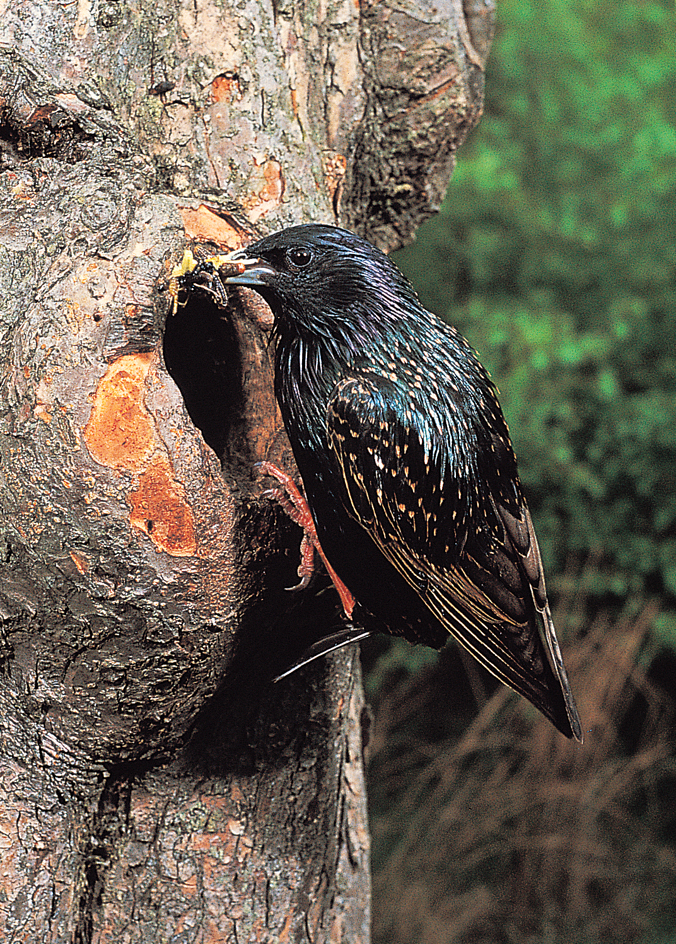Starling is the name of several songbirds related to mynas. Starlings have pointed wings, a short tail, and a sharp bill. The best-known species is the common starling (also called the European starling), which is native to Europe and Asia. In the early 1890’s, about 100 starlings from Europe were set free in Central Park in New York City. Millions now live throughout the United States and southern Canada.

The common starling is about 71/2 to 81/2 inches (19 to 22 centimeters) long. Its feathers are black with a greenish-purple gloss. In winter, the feathers are tipped with dull yellow, giving the bird a spotted appearance. The bill is yellow in summer but dark in winter.
Loading the player...European starling
The common starling nests in hollow trees, birdhouses, or holes in cliffs. The female lays from four to seven light-blue eggs. Starlings compete aggressively with North America hole-nesting birds for nest sites, sometimes driving out larger birds. Starlings are helpful to farmers because they eat many harmful insects. But in the fruit season they can be pests because they also eat many berries and cherries, and even apples and pears.
